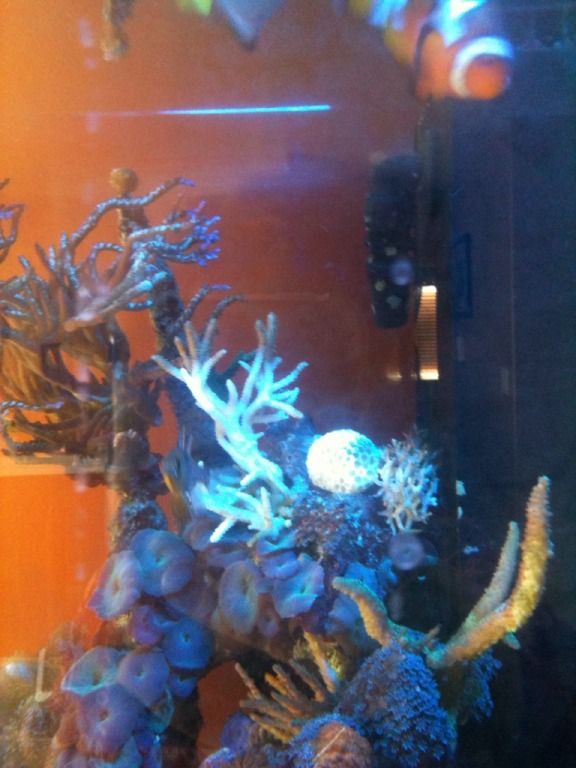
 |
|
#1
|
||||
|
||||
|
I have a stony flower poylp type coral that I bought recently (don't know the name) and I noticed it was on it's way out but I left it in the tank to see if maybe only parts of it would die off and some would be left. This morning I wake up to it completely gone and now other corals around it are bleached. Is this like a chain reaction or could they just be mad and may come back. What should I do? I did remove the dead coral but should I be worried now that all the bleached coral will just keep spreading to other coral around them?????

__________________
140 Gallon Seahorse Setup, 190 Gallon Reef and 300 gallon FOWLR http://i1304.photobucket.com/albums/...ps5a1642e8.jpg |
|
#2
|
|||||
|
|||||
|
No a chain reaction cannot happen between different types of coral. What is more likely is, tank conditions have degraded to the point where one coral dies (the weakest one) then others soon follow suit. Not saying your tank has poor conditions, just something has changed or been added that is effecting the coral negatively.
|
|
#3
|
||||
|
||||
|
Simple answer: Yes. It's like sitting next to a sick person on a bus; you'll probably get sick too. Necrosis can be caused by a number things but in many cases it is "contagious" in that it can trigger other colonies.
Longer answer: Typically when one coral is going there is a stressor in the tank that is affecting the others as well, so their already in a precarious state. Depending on what causes the recession, it can spread. In some cases the necrosis/recession is caused by protists (which can spread); protists are often present when LPS, such as flower pots, recede (aka "Brown Jelly"). In some cases the chemicals released by a dying coral are toxic enough to cause necrosis in a neighbour, who then starts to recede, who then... you get the picture. But it really depends on what caused the first one. Like KPG said as well, your corals were probably in a weakened state to begin with. My guess it that chemicals released by the dying coral just tipped them over the edge. Typically if I see something receding quickly, I just cut my losses and get it out lest it should take down a few others with it. If it's a slower recession (over day/weeks) I tend to worry less and try to give it a chance to bounce back. |
|
#4
|
|||||
|
|||||
|
In this case it sounds like unrelated species, so no, it would be like sitting beside a sick dog. You wouldn't likely catch what the dog has.
__________________
Brad |
|
#5
|
||||
|
||||
|
Are they getting stung from the mushrooms?
__________________
"Rules are for the obedience of fools and the guidance of wise men." |
|
#6
|
||||
|
||||
|
That sounds like a more likely culprit. I've had mushrooms take out multiple colonies in hours.
|
|
#7
|
|||||
|
|||||
|
I've had mushrooms sting colonies, they die where they were stung, but I've never had a colony die because of that. Can that happen?
|
|
#8
|
|||||
|
|||||
|
I dunno, this looks too much like a proximity thing from the images, the dead coral in the middle, and the bleaching spreading out from a central point centred on the dead coral. Is it possible that this was the end result of a very aggressive case of allelopathic warfare?
|
|
#9
|
||||
|
||||
|
yes.....
|
|
#10
|
|||||
|
|||||
|
oh but the h1n1 virus come from a pig and transfered to a human. This is one of the most dangerous situation when a virus goes from an animal, chicken or pig, to a human.
If it is brown jelly and if it is caused by a vibrio bacteria, it could spread to other corals around it. I have seen it go from a duncan to a sps and I managed to save the duncan with a peroxyd dip then but lost the sps. Recently I used furan 2 to cure RTN on a sps and it worked well. I would suggest next time you get such affected coral, just try a 3 minutes dip with furan 2 in a little container with tank water. A lot of parasites are specie specific but it seem bacterias are not.
__________________
_________________________ More fish die from human stupidity than any other disease... |